Get here Class 6 Maths NCERT Solutions, a Guide for 2024-25 final Exams
Free access of the complete NCERT Solutions for Class 6 Maths, brought to you by Tiwari Academy are here. These solutions are crafted in simple format to align with the CBSE syllabus for the 2024-25 academic year and are available in both Hindi and English Medium. Our Class 6 Maths Solutions provide detailed answers to all questions in the Class 6 Maths NCERT textbook, making them an essential resource for students.
Revised NCERT Solutions of Class 6 Maths
Aiming to ace your Maths exam? Dive into these 12 chapters of tailored solutions and deepen your concept grasp. Click below for chapter-wise ‘NCERT Solutions Class 6 Maths’ by Tiwari Academy:
Chapter 1. Knowing Our Numbers
Chapter 2. Whole Numbers
Chapter 3. Playing With Numbers
Chapter 4. Basic Geometrical Ideas
Chapter 5. Understanding Elementary Shapes
Chapter 6. Integers
Chapter 7. Fractions
Chapter 8. Decimals
Chapter 9. Data Handling
Chapter 10. Mensuration
Chapter 11. Algebra
Chapter 12. Ratio and Proportion
Chapters for State Board Only
Chapter 13. Symmetry
Chapter 14. Practical Geometry
Class 6 NCERT solutions for Mathematics refer to solutions provided by Tiwari Academy for the mathematics textbook of the 6th grade in the National Council of Educational Research and Training (NCERT) curriculum in Bharat. Please Provide your Review and Feedback so that we can prove you a better solutions in all subjects. Students of class 6 can often benefit from the feedback and reviews of other users who have used Tiwari Academy’s resources for Maths. This can help in assessing the quality and effectiveness of the materials.
NCERT Solutions App for Class 6
The Class 6 Maths NCERT solutions cover various mathematical concepts and topics appropriate for students at the 6th-grade level. These solutions provide step-by-step explanations, examples, and exercises that help students grasp the fundamental mathematical principles and develop problem-solving skills.
Class 6 Maths Chapter Wise Tests
Similar to other classes NCERT solutions, Class 6 Maths NCERT solutions can be obtained through various methods such as the official NCERT website, educational websites, mobile apps, and printed guides. These solutions are designed to make learning mathematics easier and more effective for students in their early stages of education.
Making class 6 Maths study easier and more enjoyable involves adopting effective study strategies and techniques. Here are some tips to help you make class 6 Maths more manageable. Start with a clear understanding of the basic mathematical concepts. Ensure you have a solid foundation in addition, subtraction, multiplication, and division. Create a clean, organized, and comfortable study space with all the necessary materials like textbooks, notebooks, pens, and a calculator if needed.
Tips to 6th Maths Solutions
The best solutions for Class 6 Maths will depend on your learning style, preferences, and needs. However, there are a few terms you can use to determine Tiwari Academy as most suitable for you. NCERT Solutions for Class 6 Maths are available for free online on a number of websites. They are also available in print form at most bookstores.
1. Ensure that the solutions you choose are accurate and cover all the topics and exercises from the Class 6 Maths NCERT textbook. Check if the solutions provide clear explanations and step-by-step approaches to solving problems.
2. Look for solutions that offer clear and easy-to-understand explanations. Complex concepts are broken down into simpler steps, making it easier for you to understand and apply them.
3. Choose solutions that offer a wide range of practice questions, including different levels of difficulty. This will help you build a strong foundation in mathematics and develop problem-solving skills.
4. This online platform and apps offer interactive features such as quizzes, animations, and videos to enhance your learning experience. These features can make learning more engaging and effective.
5. Opt for solutions from reputable sources like the official NCERT website, well-known educational platforms like Tiwari Academy, or recognized publishers. This ensures that the solutions are reliable and aligned with the curriculum.
6. If you’re considering using online platforms or apps, check user reviews and recommendations to get an idea of how effective and user-friendly the solutions are.
7. Choose solutions that are easily accessible to you without any restriction. Whether through online platforms, mobile apps, or printed guides, make sure the resources are available in a format that suits your learning preferences.
8. Some popular online platforms that offer Class 6 Maths NCERT solutions but you explore these platforms and see which one resonates with your learning style.
Modern Developments in Various Fields of Maths
Modern mathematics includes numerous subfields like number theory, geometry, algebra, calculus, discrete mathematics, mathematical logic, set theory, statistics, and computational mathematics. Each of these areas has its unique focus and applications, contributing to the rich tapestry of the mathematical universe.
Ultimately, the best solutions are the ones that help you understand and excel in your studies. It will be helpful to try out a couple of different options to see which works best for you. When you encounter difficult math problems as part of your homework assignments, NCERT solutions can serve as a valuable resource. You can refer to them to check your answers, ensuring that you’ve solved the problems correctly. NCERT solutions at Tiwari Academy are aligned with the NCERT textbooks, which are commonly used in schools across Bharat. This consistency ensures that you are studying the topics that are part of your curriculum, helping you stay on track with your class lessons.
To prepare for exams, break down the math topics into smaller, manageable sections. Visual aids such as diagrams, charts, and graphs can help you understand and remember mathematical concepts more effectively. Math is a subject that requires consistent practice. Solve problems regularly to reinforce your understanding of concepts. Don’t hesitate to ask your teacher or classmates for help if you’re struggling with a particular concept or problem. There’s no shame in seeking assistance.
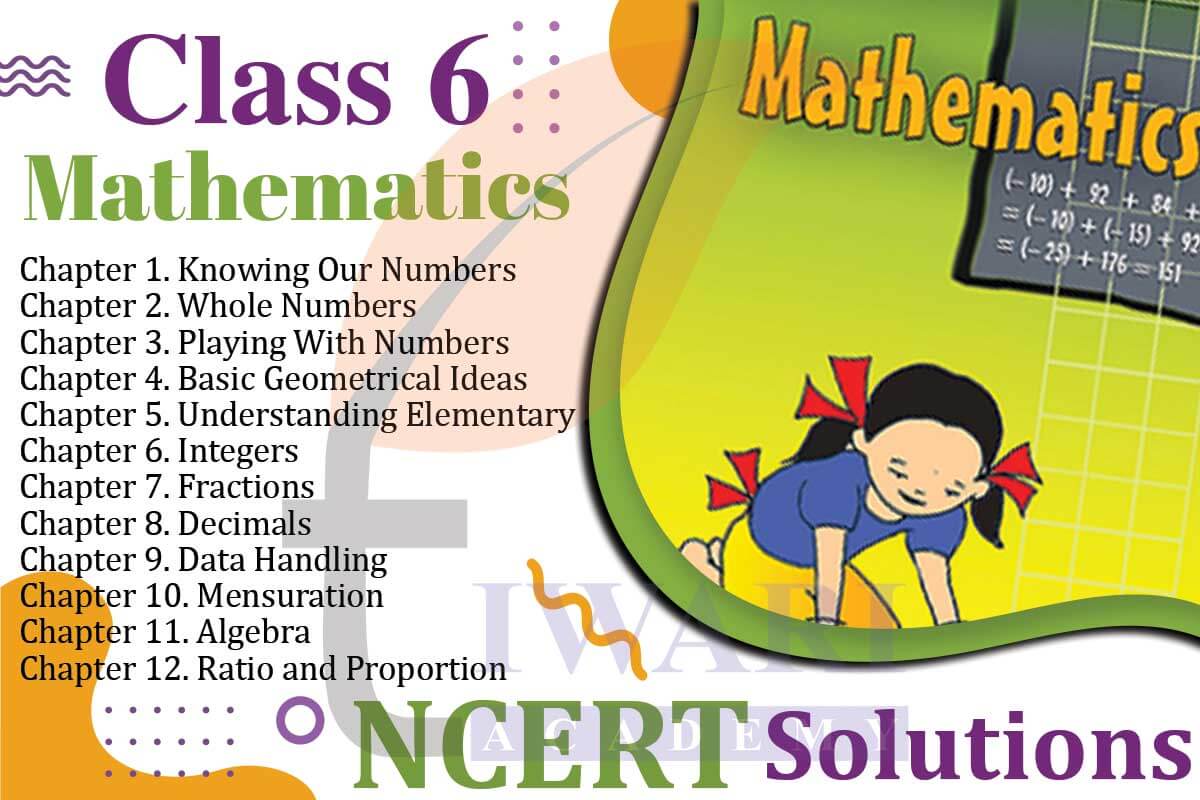
Tips to Score well in 6th Maths
Testing is the best way to know about the preparation for exams. Follow the methods given here to get help after completing the chapter. Test yourself to be confident in exams.
6th Maths Chapter wise Tests
Follow the Tips and Tricks to get maximum in class 6 Maths exams.
- Regular practice.
- Try to solve questions without any help.
- Apply all tricks you know to solve the questions.
- Follow the tricks preparing Maths Solutions
- Do not learn the solutions, learn only formulae.
- Take help of NCERT Solutions if required.
NCERT is known for producing high-quality educational materials. The solutions provided are accurate, reliable, and well-researched, making them a trustworthy source https://www.tiwariacademy.com for learning and revision. If you need to study independently or want to revisit a topic at your own pace, NCERT solutions Class 6 Maths allow you to do so effectively. You can work through problems and understand concepts without external assistance.
| Class 6 | Mathematics |
| Number of Chapters: | 12 (Twelve) |
| Content: | Solutions, Revision Tests and Videos |
| Academic Session: | Year 2024-25 |
| Content Mode: | PDF, Text, Images and Online Videos |
| Medium | Hindi and English Medium |
Ways to make Class 6 Maths NCERT Solutions easier for students
Mathematics is important to have a strong foundation in grade 6 mathematics core concepts. Get command with a good understanding of numerals, addition, subtraction, multiplication and division tables. Use physical objects such as blocks, numbers or coins to visualize and solve problems from Maths book. As you know that the syllabus is reduced for academic year 2024-25, which makes the subject seem much easier. Class 6 Maths forms the foundation for more advanced mathematical concepts you’ll encounter in higher classes. Using NCERT solutions to master these basics sets you up for success in future math courses. Tiwari Academy Class 6 Maths solution provides you a better way to solve questions.
Utilize online resources like educational websites, Maths games, and tutorials to make learning more engaging and interactive. Study with classmates or join a study group. Explaining concepts to others and discussing problems can deepen your understanding. Manage your study time wisely. Allocate specific time slots for math study and take short breaks to stay focused. Try to relate math problems to real-life situations. This can make math more relatable and interesting.
Here are some of the benefits of using NCERT Solutions for Class 6 Maths. These cover all of the important topics in the CBSE syllabus for Class 6 Maths. This ensures that students are well-prepared for their exams. NCERT Solutions are written in a clear and concise manner, making them easy for students to understand. This is especially important for young learners who are still developing their Maths skills.
Class 6 Maths Chapter Wise Tests
NCERT Solutions are graded in difficulty, with the concepts introduced in a logical order. This helps students to build on their prior knowledge and to develop a deep understanding of the concepts. Format is made totally according to class 6th Maths curriculum 2024-25. The deleted exercises are removed from the 6th Maths NCERT solutions section. The chapter wise tests of class 6 Maths are given below:
Chapter 1. Knowing Our Numbers
Chapter 2. Whole Numbers
Chapter 3. Playing With Numbers
Chapter 4. Basic Geometrical Ideas
Chapter 5. Understanding Elementary Shapes
Chapter 6. Integers
Chapter 7. Fractions
Chapter 8. Decimals
Chapter 9. Data Handling
Chapter 10. Mensuration
Chapter 11. Algebra
Chapter 12. Ratio and Proportion
NCERT Solutions include a variety of activities and exercises that help students to practice the concepts they have learned. This helps students to retain the information and to develop their problem-solving skills.
Regularly review and revise what you’ve learned. This reinforces your knowledge and helps you retain information for longer. Solve previous years’ question papers to become familiar with the exam pattern and types of questions you might encounter in class 6 math exams. Don’t study for long stretches without breaks. Short, regular breaks can help improve concentration and reduce fatigue. Remember that making math easier takes time and effort, so be patient with yourself. Celebrate your successes, no matter how small, and don’t be discouraged by challenges. With consistent practice and a positive attitude, you can make class 6 math more manageable and even enjoyable.
Tips to Prepare Class 6 Maths Exams
Getting ready for your Class 6 Mathematics finals can be fun and exciting if you know how to study smartly. First, take a look at what you need to learn – your syllabus will have all the topics listed. Make a study plan that gives you enough time for each part of the syllabus. It’s important to really understand the ideas in Maths, not just remember them. Use your school books, watch some cool math videos online, and try out lots of practice exercises. Remember, the more you practice, the better you’ll get at mathematics. If something seems too hard, don’t worry – ask your teacher or friends to help you out.
Sharpen your problem-solving skills. Maths is all about figuring out how to use what you know in different situations. Try solving old test papers and questions from previous years. This will help you get used to the kind of questions that come in the exam and also teach you how to manage your time. Pay attention to how you solve each problem – the steps you take can be just as important as the answer. Studying with friends can be really helpful too, because when you explain things to someone else, it helps you understand them better.
Keep a happy and positive mindset. Don’t try to learn everything at once – take breaks and make sure you get plenty of sleep. A well-rested brain works better! The day before your exam, just go over your notes lightly and try to relax. Believe in yourself and the hard work you’ve put in. During the exam, read each question carefully, keep an eye on the time, and don’t spend too long on one question. Remember, being well-prepared and confident is the secret to doing great in your Class 6 Maths finals!
Class 6 Maths Solution Apps in Hindi and English Medium
Use Class 6 Apps (Android and iOS)
To study through mobile or tablets, students may use Tiwari Academy’s offline apps given here. These are the best source for NCERT solutions during study. Focus on Class 6 Maths Test papers, NCERT Exemplar Solutions, problem solving skills rather than memorizing mathematical concepts. The NCERT textbook solutions of Class 6 Maths is available for new session following the revised syllabus.
| Class 6 All Subjects iOS App for iPad & iPhone |
Download class 6 Android or iOS for iPhone and iPad Offline and Online best apps for new curriculum 2024-25. NCERT Solutions App for Class 6 Maths are an essential resource for students who want to excel in their Maths exams and to develop a deep understanding of the concepts.
If you’re planning to appear for competitive exams or entrance tests in the future, having a strong understanding of Class 6 math solution concepts through NCERT solutions App can be beneficial as these exams often have questions based on fundamental math principles.
Using Android and iOS apps for NCERT (National Council of Educational Research and Training) Solutions can offer several advantages for students and educators. NCERT solutions Apps for Class 6 Maths are an invaluable resource for learning, practicing, and mastering mathematical concepts. They help you build a strong foundation in mathematics, which is essential for academic success in this subject and beyond.
The time duration required to complete the class 6 mathematics course can vary depending on several factors, including the curriculum, the student’s learning pace, the quality of instruction, and individual circumstances. Generally, a full academic year is allocated for the completion of the class 6 mathematics syllabus in most educational systems. In many countries, class 6 is part of the primary or middle school curriculum, and students typically have one academic year to complete the mathematics course. This means that the curriculum is designed to be taught and learned over the course of that year.
NCERT Solutions Class 6 Maths & Main Points of All Chapters
Chapter 1: Knowing Our Numbers
The Class 6 Maths Chapter 1 Solutions includes Exercise 1.1, which is based on comparing numbers.
Class 6 Maths Chapter 1 for CBSE Board
Class 6 Maths Exercise 1.1
Class 6 Maths Exercise 1.2
Class 6 Maths Chapter 1 for State Boards
Class 6 Maths Chapter 1 Exercise 1.1
Class 6 Maths Chapter 1 Exercise 1.2
Class 6 Maths Chapter 1 Exercise 1.3
Class 6 Maths Chapter 1 in Hindi Medium
Class 6 Maths Exercise 1.1 in Hindi
Class 6 Maths Exercise 1.2 in Hindi
Concepts of ascending and descending order, shifting the digits, using place value, face value and dealing with a large number of 6 or 7 digits. We should use commas in Indian or International system very carefully.
Class 6 Maths Exercise 1.2 contains sums related to the word problem. The basic knowledge of Roman numbering along with the use of brackets is point of focus at the end of chapter 1 of Class 6 Mathematics.
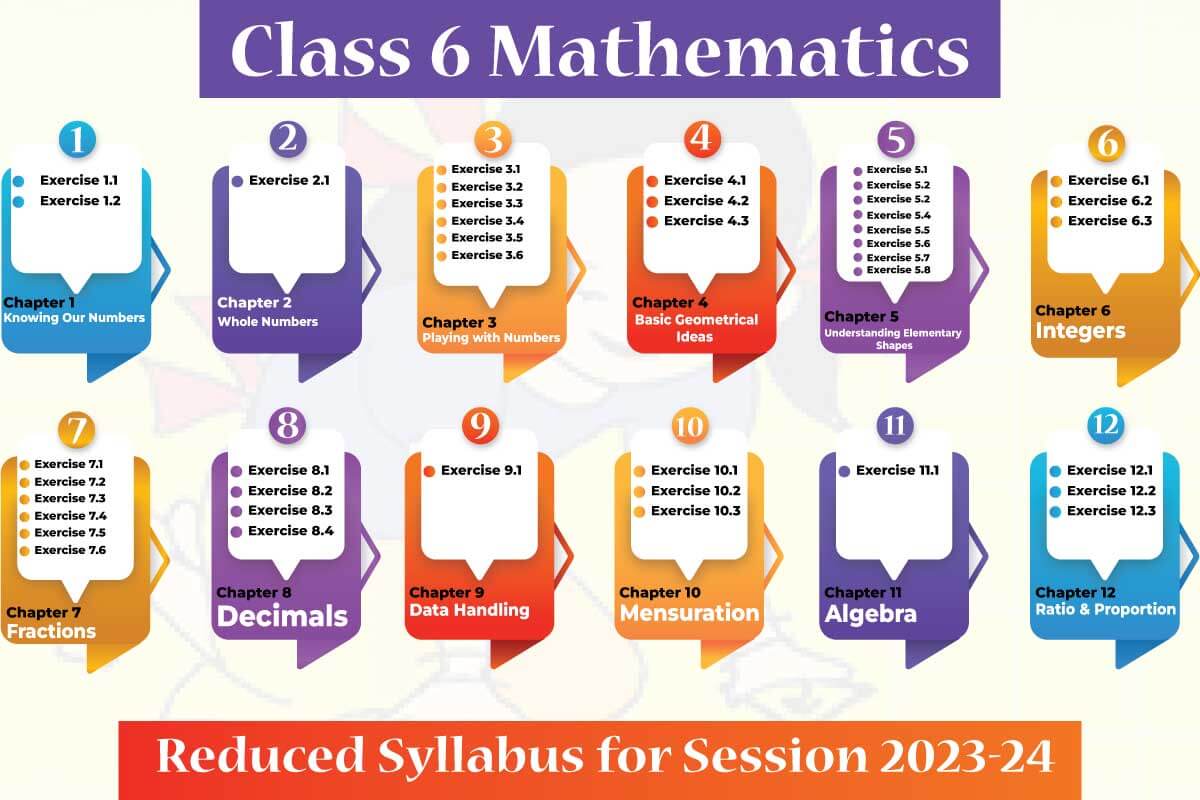
Chapter 2: Whole Numbers
The NCERT Class 6 Maths Chapter 2 starts with the concepts of successor and predecessor. Class 6 Maths Exercise 2.1 describes the addition and subtraction of integers using Number Line.
Class 6 Maths Chapter 2 for CBSE Board
Class 6 Maths Exercise 2.1
Class 6 Maths Chapter 2 for State Boards
Class 6 Maths Chapter 2 Exercise 2.1
Class 6 Maths Chapter 2 Exercise 2.2
Class 6 Maths Chapter 2 Exercise 2.3
Class 6 Maths Chapter 2 in Hindi Medium
Class 6 Maths Exercise 2.1 in Hindi
Closure property, commutative of addition and multiplication and some examples of associative property of addition and multiplication are in Exercise 2.1 of Class 6 Maths. We will learn here the Identity for addition and multiplication also.
Chapter 3: Playing with Numbers
Class 6 Maths NCERT (https://ncert.nic.in/) Chapter 3 provides the practice of obtaining factors and multiplication of a number. In Class 6 Maths Chapter 3 Exercise 3.1, there are lots of questions for finding factors or multiples.
Class 6 Maths Chapter 3 for CBSE and State Boards
Class 6 Maths Exercise 3.1
Class 6 Maths Exercise 3.2
Class 6 Maths Exercise 3.3
Class 6 Maths Exercise 3.4
Class 6 Maths Exercise 3.5
Class 6 Maths Exercise 3.6
Class 6 Maths Exercise 3.7
Tiwari Academy is a popular online platform for NCERT solutions for all classes, including Class 6. It is considered to be one of the best platforms for Class 6 Maths solutions for several reasons. Exercise 3.2 of grade 6 Maths, describes Prime and Composite numbers as well as Even and Odd numbers. Test of divisibility by 2, 3, 5, 7, 9 and 11 are given in Exercise 3.3 of Class 6 Maths Solutions.
Class 6 Maths Chapter 3 in Hindi Medium
Class 6 Maths Exercise 3.1 in Hindi
Class 6 Maths Exercise 3.2 in Hindi
Class 6 Maths Exercise 3.3 in Hindi
Class 6 Maths Exercise 3.4 in Hindi
Class 6 Maths Exercise 3.5 in Hindi
Class 6 Maths Exercise 3.6 in Hindi
Class 6 Maths Exercise 3.7 in Hindi
In Class 6 Exercise 3.4, students get the idea of finding common factors and multiples of given integers. In Exercise 3.5, the questions based on prime factorisation are given. 6th Maths Exercise 3.6 is based on HCF (Highest Common Factor), and Exercise 3.7 is designed for LCM (Least Common Multiple).
Chapter 4: Basic Geometrical Ideas
NCERT Textbook Class 6 Maths Chapter 4 starts with the concept of a Point, Line Segment, a Line, a Ray, Intersecting and Parallel line. Tiwari Academy’s NCERT solutions are written by experienced subject matter experts and cover all of the important topics in the textbook. The solutions are accurate and easy to understand.
Class 6 Maths Chapter 4 for CBSE Board
Class 6 Maths Exercise 4.1
Class 6 Maths Exercise 4.2
Class 6 Maths Exercise 4.3
Class 6 Maths Chapter 4 for State Boards
Class 6 Maths Chapter 4 Exercise 4.1
Class 6 Maths Chapter 4 Exercise 4.2
Class 6 Maths Chapter 4 Exercise 4.3
Class 6 Maths Chapter 4 Exercise 4.4
Class 6 Maths Chapter 4 Exercise 4.5
Class 6 Maths Chapter 4 Exercise 4.6
Tiwari Academy’s NCERT solutions are available for free online. This makes them accessible to all students, regardless of their financial background. In addition to these general benefits, Tiwari Academy’s NCERT solutions for Class 6 Maths can also help students to improve their conceptual understanding of the subjects.
Class 6 Maths Chapter 4 in Hindi Medium
Class 6 Maths Exercise 4.1 in Hindi
Class 6 Maths Exercise 4.2 in Hindi
Class 6 Maths Exercise 4.3 in Hindi
All the questions of Exercise 4.1 of Class 6 Maths are based on facts as mentioned above. In the next section, Exercise 4.2, we will deal with Simple Curves (Open and Closed Curves), Polygons, Sides, Vertices and Diagonals of a Polygon. Exercise 4.3 is based on Angles and its components.
Chapter 5: Understanding Elementary Shapes
The contents of Class 6 Maths Chapter 5 describes the measuring Line Segments using Ruler and Divider. In Exercise 5.1, we have to measure the given line segments.
Class 6 Maths Chapter 5 for CBSE Board
Class 6 Maths Exercise 5.1
Class 6 Maths Exercise 5.2
Class 6 Maths Exercise 5.3
Class 6 Maths Exercise 5.4
Class 6 Maths Exercise 5.5
Class 6 Maths Exercise 5.6
Class 6 Maths Exercise 5.7
Class 6 Maths Exercise 5.8
Class 6 Maths Chapter 5 for State Boards
Class 6 Maths Chapter 5 Exercise 5.1
Class 6 Maths Chapter 5 Exercise 5.2
Class 6 Maths Chapter 5 Exercise 5.3
Class 6 Maths Chapter 5 Exercise 5.4
Class 6 Maths Chapter 5 Exercise 5.5
Class 6 Maths Chapter 5 Exercise 5.6
Class 6 Maths Chapter 5 Exercise 5.7
Class 6 Maths Chapter 5 Exercise 5.8
Class 6 Maths Chapter 5 Exercise 5.9
Tiwari Academy’s NCERT solutions provide step-by-step solutions to all of the problems in the textbook. These NCERT solutions are aligned with the CBSE syllabus. This means that by studying the Tiwari Academy NCERT solutions, students can be sure that they are covering all of the important topics that will be on their exams.
Class 6 Maths Chapter 5 in Hindi Medium
Class 6 Maths Exercise 5.1 in Hindi
Class 6 Maths Exercise 5.2 in Hindi
Class 6 Maths Exercise 5.3 in Hindi
Class 6 Maths Exercise 5.4 in Hindi
Class 6 Maths Exercise 5.5 in Hindi
Class 6 Maths Exercise 5.6 in Hindi
Class 6 Maths Exercise 5.7 in Hindi
Class 6 Maths Exercise 5.8 in Hindi
In Exercise 5.2 of grade VI math, students will observe and identify the angles like Right angle, Straight angle or Complete angle. Later on in Exercise 5.3 of 6th Maths, Acute angle, Obtuse angle, and Reflex angles to be discussed. Measuring the angles in Degree, using Protector is done in Exercise 5.4 of Class 6. We will learn the concepts of perpendicular lines or perpendicular bisectors in Exercise 5.5 of Class 6 Mathematics. Similarly, the classification of various triangles is given in Ex. 5.6 and that of quadrilaterals in Ex. 5.7 of Class 6 Maths. The identification, name and other properties of 3 – D figure is in the next exercises.
Chapter 6: Integers
NCERT Textbook Class 6 Maths Chapter 6 focusses on Integers. The main focus is on Integers on Number Line and Ordering of Integers using signs. Exercise 6.1 includes the basic question based on properties of Integers.
Class 6 Maths Chapter 6 for CBSE and State Boards
Class 6 Maths Exercise 6.1
Class 6 Maths Exercise 6.2
Class 6 Maths Exercise 6.3
Tiwari Academy’s NCERT solutions are available in both English and Hindi. The solutions explain the concepts in the textbook in a clear and concise manner. This helps students to develop a deep understanding of the subjects, which is essential for success in their exams.
Class 6 Maths Chapter 6 in Hindi Medium
Class 6 Maths Exercise 6.1 in Hindi
Class 6 Maths Exercise 6.2 in Hindi
Class 6 Maths Exercise 6.3 in Hindi
Class 6 Maths SolutionsExercise 6.2 focuses on the addition of Integers on Number Line. Succeeding in the same manner, Exercise 6.3 has a main focus on subtraction of Integers on Number Line.
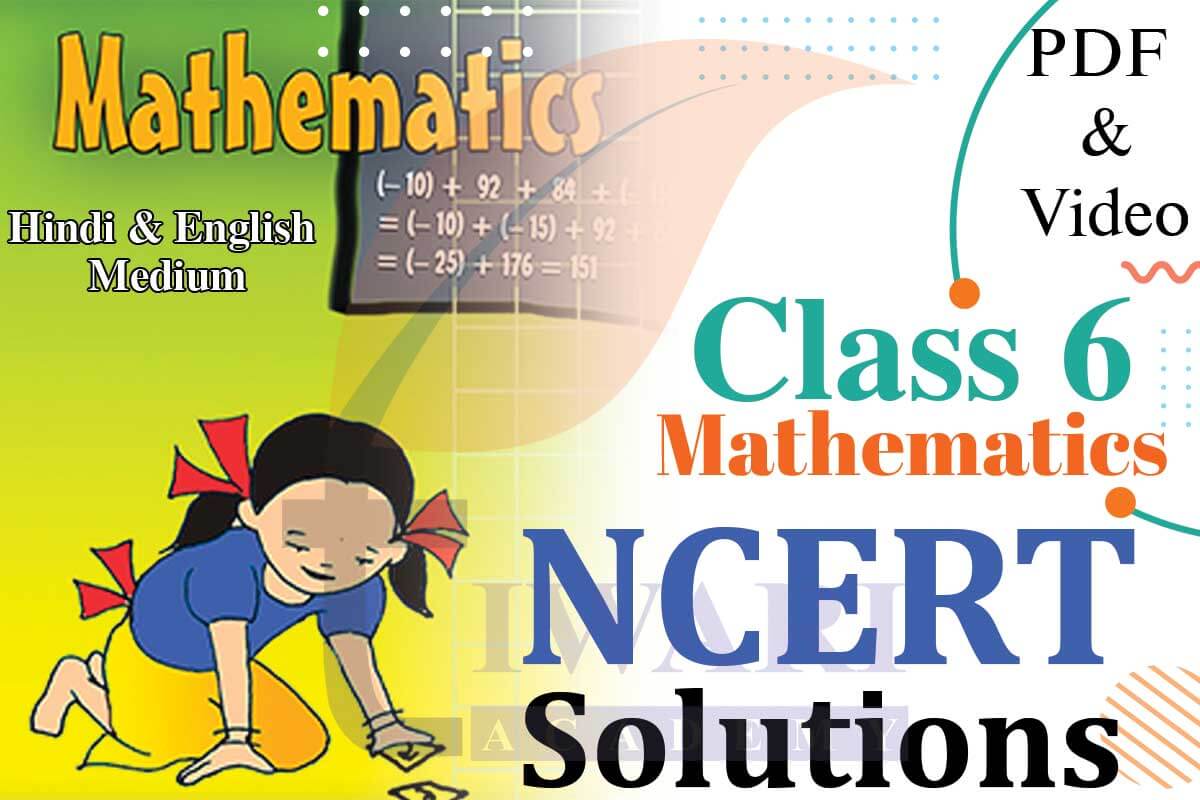
Chapter 7: Fractions
Here, the class 6 Maths chapter 7 Exercise 7.1 describes the Fractions through pictorial representation and some other basic word problems.
Class 6 Maths Chapter 7 for CBSE and State Boards
Class 6 Maths Exercise 7.1
Class 6 Maths Exercise 7.2
Class 6 Maths Exercise 7.3
Class 6 Maths Exercise 7.4
Class 6 Maths Exercise 7.5
Class 6 Maths Exercise 7.6
Here are some additional tips that may be helpful for students using Tiwari Academy’s NCERT solutions for Class 6 Maths. The Tiwari Academy NCERT solutions are designed to help students to answer the types of questions that are likely to be asked in their exams. It helps to improve their performance in their exams.
Class 6 Maths Chapter 7 in Hindi Medium
Class 6 Maths Exercise 7.1 in Hindi
Class 6 Maths Exercise 7.2 in Hindi
Class 6 Maths Exercise 7.3 in Hindi
Class 6 Maths Exercise 7.4 in Hindi
Class 6 Maths Exercise 7.5 in Hindi
Class 6 Maths Exercise 7.6 in Hindi
Class 6 Maths Exercise 7.2 deals with Proper Fraction, Improper Fraction, Mixed Fraction and Fraction on Number Line. Equivalent Fractions, the simple form of a Fraction removing common factors from Numerator and Denominator are the main points in Exercise 7.3 of Maths for Class 6. Students will be more aware about Like and Unlike Fractions and Comparison of two or more Fractions in Exercise 7.4 of 6th Mathematics. Addition and Subtraction of Fractions are the main practice in Exercise 7.5 as well as Exercise 7.6 of Class 6 Maths.
Chapter 8: Decimals
The Class 6 Maths Chapter 8 explains the Decimal numbers like Tenths, Hundredths and its representation on Number Line.
Class 6 Maths Chapter 8 in English Medium
Class 6 Maths Exercise 8.1
Class 6 Maths Exercise 8.2
Class 6 Maths Exercise 8.3
Class 6 Maths Exercise 8.4
Many competitive exams, such as JEE Mains and NEET, are based on the NCERT syllabus. By studying the Tiwari Academy NCERT solutions, students can prepare for these exams more effectively. Overall, Tiwari Academy is a great resource for students who want to excel in their studies and to prepare for success in their future.
Class 6 Maths Chapter 8 in Hindi Medium
Class 6 Maths Exercise 8.1 in Hindi
Class 6 Maths Exercise 8.2 in Hindi
Class 6 Maths Exercise 8.3 in Hindi
Class 6 Maths Exercise 8.4 in Hindi
Conversion of Fraction as Decimals is the main topic to be discussed in Exercise 8.1 of Class 6 Maths. Terms related to Hundredths and Thousandths are given in Exercise 8.2 and the comparison of decimals in Exercise 8.3 of 6th Grade Maths. The application of Decimals representing Money, Weight, Length, etc., are given in Exercise 8.4 of Chapter 8, grade 6 Mathematics.
Chapter 9: Data Handling
The Class 6 Maths Chapter 9 Data Handling Exercise 9.1 describes about Pictographs using Tally Marks, whereas Exercise 9.2 explains how to draw a Pictograph.
Class 6 Maths Chapter 9 for CBSE Board
Class 6 Maths Exercise 9.1
Class 6 Maths Chapter 9 for State Boards
Class 6 Maths Chapter 9 Exercise 9.1
Class 6 Maths Chapter 9 Exercise 9.2
Class 6 Maths Chapter 9 Exercise 9.3
Class 6 Maths Chapter 9 Exercise 9.4
Class 6 Maths Chapter 9 in Hindi Medium
Class 6 Maths Exercise 9.1 in Hindi
Data Handling is one of the core concepts in Statistics, which is one of the important topics to score well in all the classes.
Chapter 10: Mensuration
Class 6 Maths NCERT Book Chapter 10 Mensuration understands based concepts. Class 6 Maths Chapter 10 is a common concept for all the next classes.
Class 6 Maths Chapter 10 for CBSE and State Boards
Class 6 Maths Exercise 10.1
Class 6 Maths Exercise 10.2
Class 6 Maths Exercise 10.3
Class 6 Maths Chapter 10 in Hindi Medium
Class 6 Maths Exercise 10.1 in Hindi
Class 6 Maths Exercise 10.2 in Hindi
Class 6 Maths Exercise 10.3 in Hindi
Students need to practice this chapter properly, so that they will never face any problem to understand the questions related to Mensuration in future. Class 6 Maths NCERT Solutions Chapter 10 Exercise 10.1 is based on the perimeter of plane figures, whereas Exercise 10.2 is focusing on Areas of Plane figures. In Exercise 10.3, we can find the areas of plane figures using a suitable formula.
Chapter 11: Algebra
The Class 6 Maths Chapter 11 deals with topic Algebra which is one of the three branches of Mathematics Geometry, Arithmetic and Algebra. Don’t be afraid to ask for help. If you are having difficulty understanding a concept or solving a problem, ask your teacher or a friend for help.
Class 6 Maths Chapter 11 for CBSE Board
Class 6 Maths Exercise 11.1
Class 6 Maths Chapter 11 for State Boards
Class 6 Maths Chapter 11 Exercise 11.1
Class 6 Maths Chapter 11 Exercise 11.2
Class 6 Maths Chapter 11 Exercise 11.3
Class 6 Maths Chapter 11 Exercise 11.4
Class 6 Maths Chapter 11 Exercise 11.5
Class 6 Maths Chapter 11 in Hindi Medium
Class 6 Maths Exercise 11.1 in Hindi
Exercise 11.1 illustrates the concepts of Algebra using Matchsticks as well as using some word problems. Use the solutions in conjunction with your textbook and other resources. The solutions should not be used as a substitute for studying the textbook. Instead, they should be used to check your understanding of the concepts and to solve problems.
Chapter 12: Ratio and Proportion
The Class 6 Maths Chapter 12 Exercise 12.1 provides a good practice of Ratios. Most questions are related to daily life only.
Class 6 Maths Chapter 12 in English Medium
Class 6 Maths Exercise 12.1
Class 6 Maths Exercise 12.2
Class 6 Maths Exercise 12.3
Use Tiwari Academy’s Class 6 Maths Solutions and Practice regularly. Try to solve some problems from the textbook or from the Tiwari Academy NCERT solutions every day. Don’t give up. If you keep practicing and don’t give up, you will eventually succeed.
Class 6 Maths Chapter 12 in Hindi Medium
Class 6 Maths Exercise 12.1 in Hindi
Class 6 Maths Exercise 12.2 in Hindi
Class 6 Maths Exercise 12.3 in Hindi
In Exercise 12.2, Ratios extent to Proportions. Now using two Ratios, we deal with the concept of Proportions. Unitary Methods play a key role in the mathematical calculation and these are useful for day to day life calculations. Exercise 12.3 of Class 6 Maths explains Unitary Method in a better way to understand.
Chapter 13: Symmetry
Find thorough NCERT solutions for Class 6 Maths Chapter 13, Symmetry. Expertly crafted explanations suitable for CBSE and state boards at Tiwari Academy.
Class 6 Maths Chapter 13 Solutions for State Boards
Class 6 Maths Chapter 13 Exercise 13.1
Class 6 Maths Chapter 13 Exercise 13.2
Class 6 Maths Chapter 13 Exercise 13.3
Chapter 14: Practical Geometry
Access comprehensive NCERT solutions for Class 6 Maths Chapter 14 on Practical Geometry. Detailed guides in clear language for CBSE and state board students at Tiwari Academy.
Class 6 Maths Chapter 14 Solutions for State Boards
Class 6 Maths Chapter 14 Exercise 14.1
Class 6 Maths Chapter 14 Exercise 14.2
Class 6 Maths Chapter 14 Exercise 14.3
Class 6 Maths Chapter 14 Exercise 14.4
Class 6 Maths Chapter 14 Exercise 14.5
Class 6 Maths Chapter 14 Exercise 14.6
Support each other in Maths Practice
Every student learns in a different way. Students who need extra support require individual attention in NCERT Class 6 Maths Solutions. Students provide individual guidance to each other, clarify doubts, and provide additional training or other clarification as needed. Add games, puzzles, and group activities to make learning math fun. Use math stories, songs or mnemonics to help you remember ideas.
The pace at which the curriculum is covered can vary from school to school and from one education system to another. Some schools or students may cover the curriculum faster or slower than others. The effectiveness of teaching and the quality of instructional materials can influence how quickly students grasp mathematical concepts. Well-designed lessons and engaging teaching methods can expedite the learning process. Students have different learning styles and aptitudes for mathematics. Some students may find certain concepts easier to grasp, while others may require more time and support.
Tiwari Academy’s best NCERT Solutions for Class 6 Maths helps to create a positive and encouraging learning. Remember that mastering math takes patience, practice, and a variety of study methods. By implementing these strategies and adapting them to the specific needs of your students, you can help them develop a strong foundation in math and build confidence in their abilities.
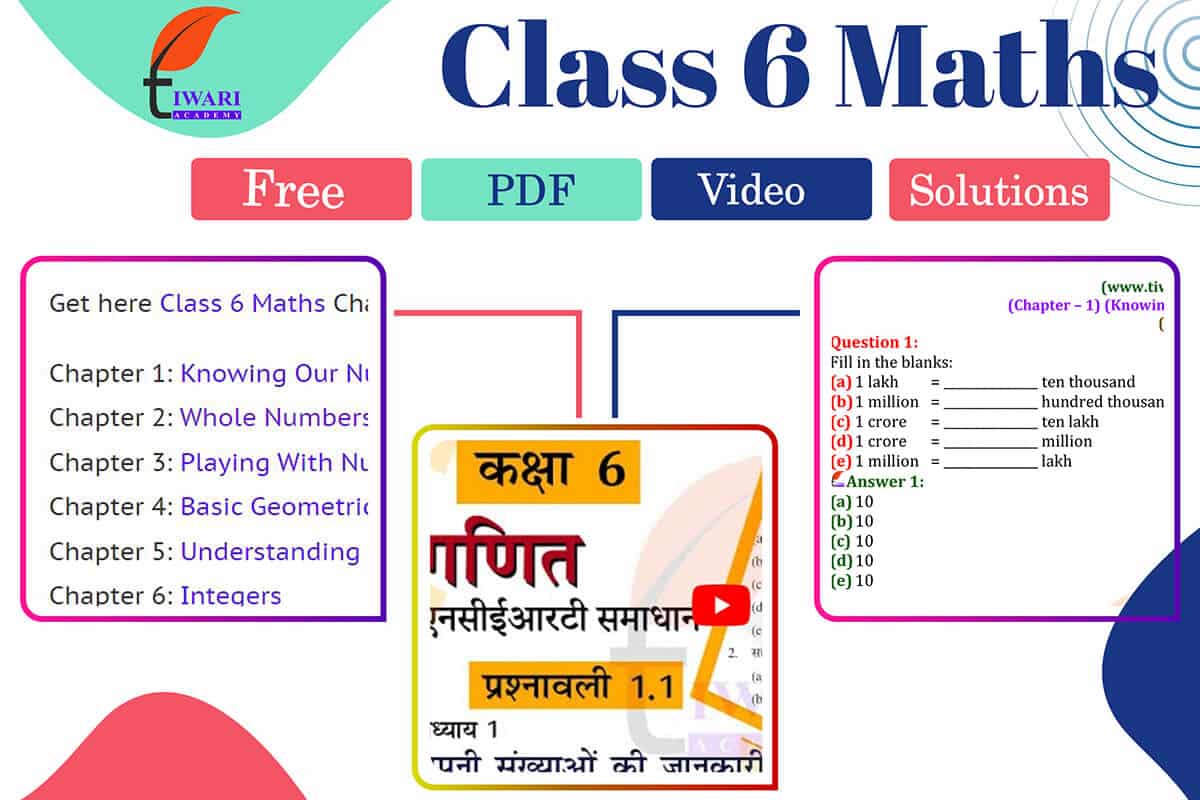
Some students may receive additional support, such as tutoring or extra classes, to help them master the curriculum. Adequate time should also be allocated for reviewing and practicing concepts, as this is essential for a thorough understanding of mathematics. In most cases, a standard class 6 mathematics curriculum is designed to be completed within the academic year, but it’s important to note that the pace at which students learn can vary. Some students may finish the course earlier, while others may need extra time.
If you’re studying class 6 mathematics outside of a traditional school setting or have unique circumstances, it’s important to set a reasonable study schedule and pace that suits your individual needs and goals. Consistency in studying, regular practice, and seeking help when needed can all contribute to successful completion of the course.
Access Offline and Online content at your convenience
Use Class 6 Maths NCERT Solution with the help of many math-friendly games, apps, and websites available. If there’s a difficult question or chapter, break it down into smaller, manageable steps. Read step by step, making sure students understand each section before moving on to the next. This gentle approach helps build confidence and awareness.
How to learn Class 6 Maths using NCERT Solutions?
According to academic session 2024-25, there are only 12 chapters in class 6 mathematics syllabus. Scoring well in Class 6 math using NCERT solutions requires a systematic approach and regular practice. As you prepare for exams, NCERT solutions are an excellent tool for revision. You can review key concepts, solve additional practice problems, and verify your solutions using these resources. Follow the videos and PDF solutions of class 8 Maths to get good marks in exams. Follow the steps to help you achieve this.
- Step 1: Understand the 6th Maths NCERT Textbook and create a Study Schedule.
- Step 2: Practice regularly using revised NCERT Book for class 6 and take Notes.
- Step 3: Solve Class 6 Maths Previous Year Question Papers and work on weak areas.
- Step 4: Take help from online educational websites like Tiwari Academy for revision.
- Step 5: Test yourself doing regular practice of previous chapters.
Step 1: Understand the 6th Maths NCERT Textbook and create a Study Schedule.
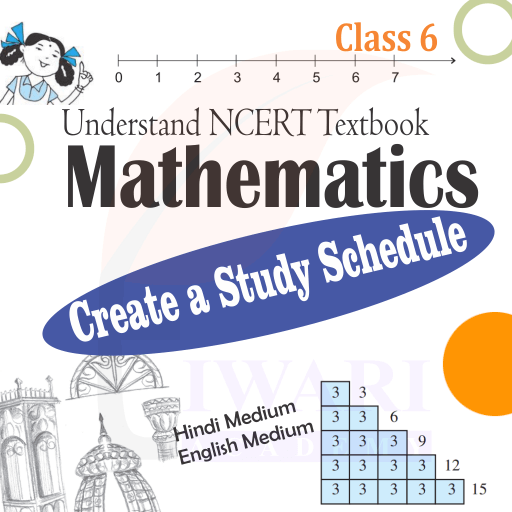
Step 2: Practice regularly using revised NCERT Book for class 6 and take Notes.
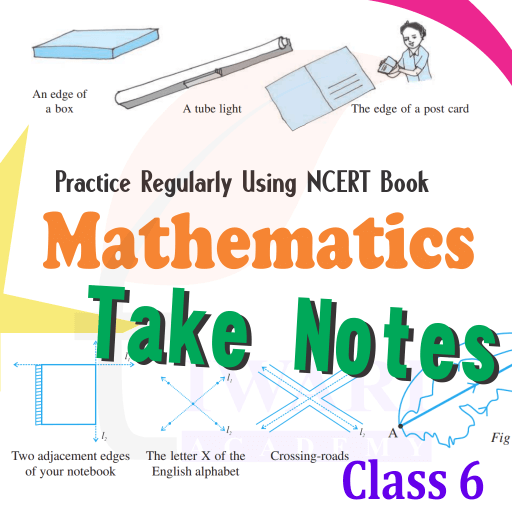
Step 3: Solve Class 6 Maths Previous Year Question Papers and work on weak areas.
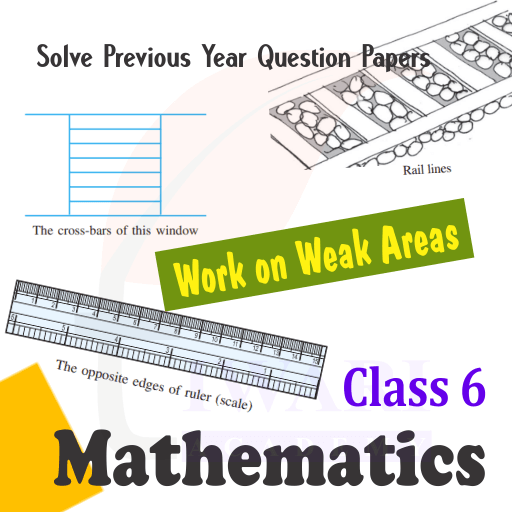
Step 4: Take help from online educational websites like Tiwari Academy for revision.

Step 5: Test yourself doing regular practice of previous chapters.
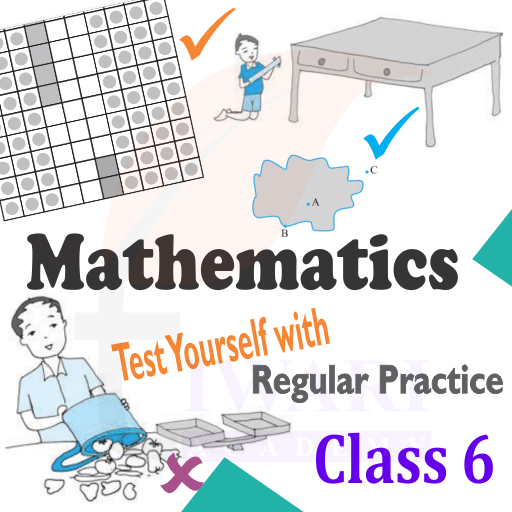
Regular practice is essential to strengthen math skills. A variety of Class 6 Maths NCERT Solutions PDF with practice tasks and worksheets are available on Tiwari Academy for Class 6 students. Students should practice regularly at home and also encourage their classmates to practice.
How to score well in Class 6 Maths terminal Exams?
If a student of class VI wants to get more than 90% in Maths marks, he/she must first complete NCERT. Do all the examples and questions given in the exercise. After going through the NCERT Textbook for Class VI Maths, start working on the NCERT Exemplar and Sample Paper Book now. These have questions that raise the level of mind to think about mathematical concepts more than ever before. Regular practice of both these books helps the students to score more than 90% marks in class 6 Maths. To know more steps about to scoring well in 6th Maths, please follow the link.
What are the difficult Chapters for Class 6 Maths?
According to new syllabus, there are total 12 chapters in class 6 Maths. Of these, Chapter 10 Measurement based chapter Mensuration and Chapter 12 Ratios and Proportion also require more time to understand and practice. There are many questions which need to be practiced two or three times to understand them properly. Hence, these two chapters are considered as the tough chapters of the NCERT Book for Class 6 Maths book.
How to practice Class 6 Maths to get good marks?
Most of the questions asked in exams are picked up from NCERT Textbooks only. If a student spend at least one hour time to practice Class 6 Maths Solutions and NCERT books, he can easily score more than passing marks. Examples, given just before each exercises, are also important for the examination point of view. These examples are also helpful during the exercise practice to understand the way of solving different questions.
Which chapters of Class 6 Maths are easy to score well?
As per the rationalised syllabus and new NCERT book released, the 6th Maths book contains only 12 chapters. Chapter 1, 2, 3, 5 and 9 are easier to practice and score good marks in exams. These are not only easy chapters but interesting also. These chapters require less time to practice but good to score marks in exams. During the exams, students should solve the questions of these chapter first then go for the difficult chapters.



